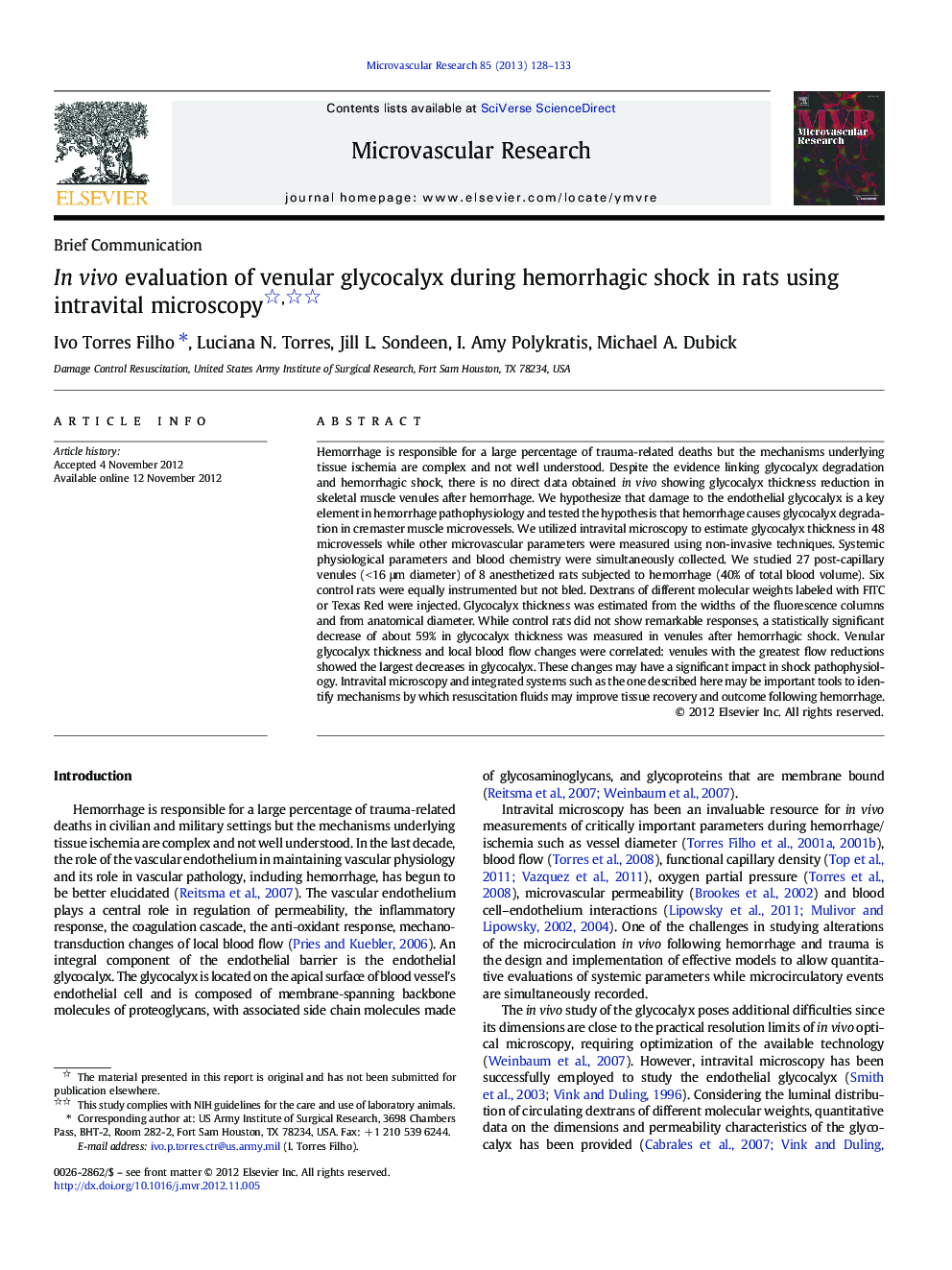| کد مقاله | کد نشریه | سال انتشار | مقاله انگلیسی | نسخه تمام متن |
|---|---|---|---|---|
| 1994918 | 1541299 | 2013 | 6 صفحه PDF | دانلود رایگان |

Hemorrhage is responsible for a large percentage of trauma‐related deaths but the mechanisms underlying tissue ischemia are complex and not well understood. Despite the evidence linking glycocalyx degradation and hemorrhagic shock, there is no direct data obtained in vivo showing glycocalyx thickness reduction in skeletal muscle venules after hemorrhage. We hypothesize that damage to the endothelial glycocalyx is a key element in hemorrhage pathophysiology and tested the hypothesis that hemorrhage causes glycocalyx degradation in cremaster muscle microvessels. We utilized intravital microscopy to estimate glycocalyx thickness in 48 microvessels while other microvascular parameters were measured using non-invasive techniques. Systemic physiological parameters and blood chemistry were simultaneously collected. We studied 27 post-capillary venules (< 16 μm diameter) of 8 anesthetized rats subjected to hemorrhage (40% of total blood volume). Six control rats were equally instrumented but not bled. Dextrans of different molecular weights labeled with FITC or Texas Red were injected. Glycocalyx thickness was estimated from the widths of the fluorescence columns and from anatomical diameter. While control rats did not show remarkable responses, a statistically significant decrease of about 59% in glycocalyx thickness was measured in venules after hemorrhagic shock. Venular glycocalyx thickness and local blood flow changes were correlated: venules with the greatest flow reductions showed the largest decreases in glycocalyx. These changes may have a significant impact in shock pathophysiology. Intravital microscopy and integrated systems such as the one described here may be important tools to identify mechanisms by which resuscitation fluids may improve tissue recovery and outcome following hemorrhage.
► A new hemorrhagic shock model allowing in vivo glycocalyx measurements is described.
► Microhemodynamics and systemic physiological data were simultaneously collected.
► Glycocalyx thickness was estimated using fluorescent dextrans of different sizes.
► Glycocalyx was reduced by 59% after hemorrhage in cremaster and mesentery venules.
► Venular glycocalyx thickness and local blood flow changes were correlated after shock
Journal: Microvascular Research - Volume 85, January 2013, Pages 128–133